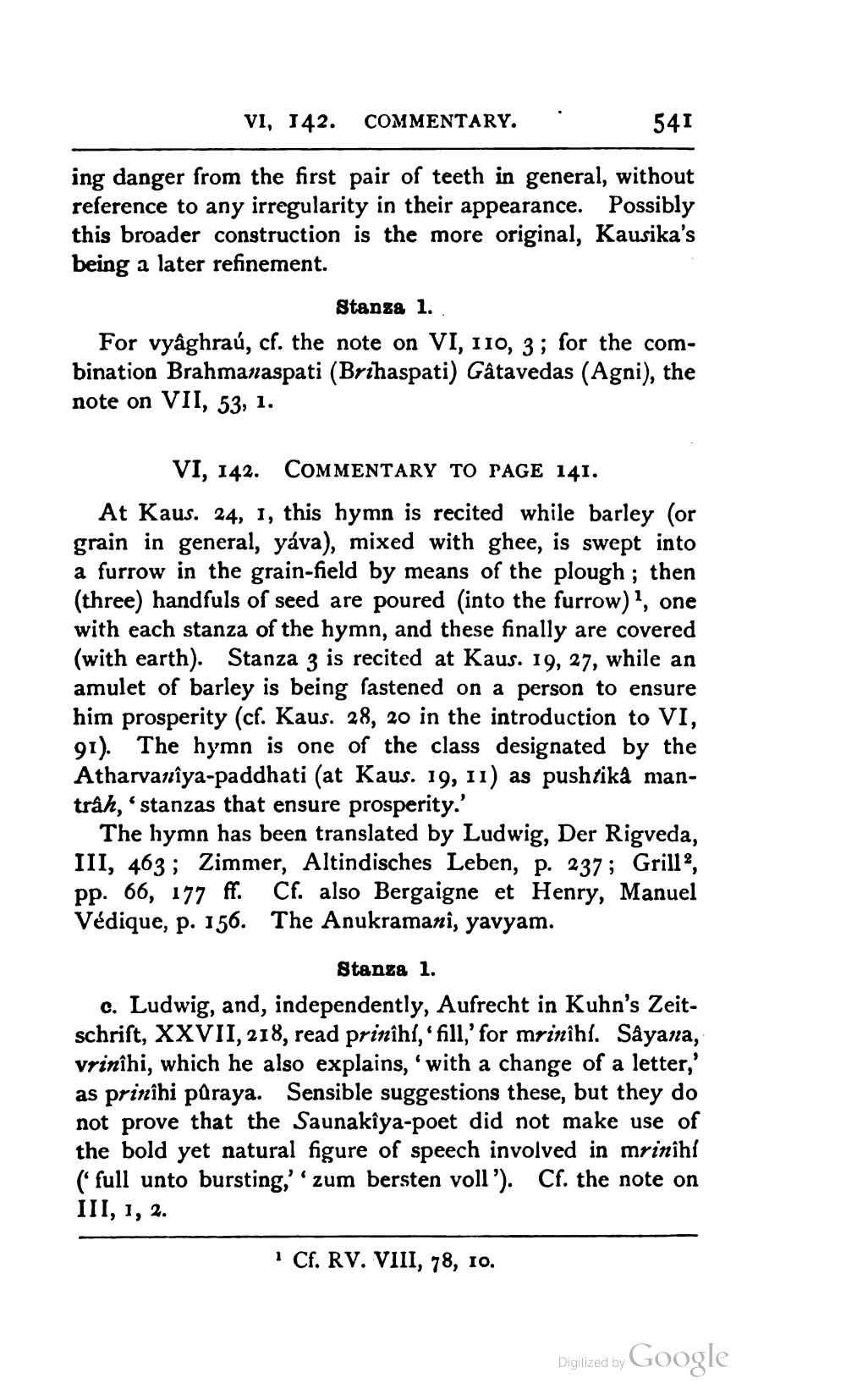________________
VI, 142. COMMENTARY.
.
541
ing danger from the first pair of teeth in general, without reference to any irregularity in their appearance. Possibly this broader construction is the more original, Kausika's being a later refinement.
Stanza 1.
For vyāghraú, cf. the note on VI, 110, 3; for the combination Brahmanaspati (Brihaspati) Gâtavedas (Agni), the note on VII, 53, 1.
VI, 142. COMMENTARY TO PAGE 141. At Kaus. 24, 1, this hymn is recited while barley (or grain in general, yáva), mixed with ghee, is swept into a furrow in the grain-field by means of the plough; then (three) handfuls of seed are poured into the furrow)?, one with each stanza of the hymn, and these finally are covered (with earth). Stanza 3 is recited at Kaus. 19, 27, while an amulet of barley is being fastened on a person to ensure him prosperity (cf. Kaus. 28, 20 in the introduction to VI, 91). The hymn is one of the class designated by the Atharvaniya-paddhati (at Kaus. 19, 11) as pushtika mantrâh, 'stanzas that ensure prosperity.'
The hymn has been translated by Ludwig, Der Rigveda, III, 463 ; Zimmer, Altindisches Leben, p. 237; Grille, pp. 66, 177 ff. Cf. also Bergaigne et Henry, Manuel Védique, p. 156. The Anukramani, yavyam.
Stanza 1. c. Ludwig, and, independently, Aufrecht in Kuhn's Zeitschrift, XXVII, 218, read prinihi, fill,' for mrinîhí. Såyana, vrinîhi, which he also explains, with a change of a letter,' as prinîhi puraya. Sensible suggestions these, but they do not prove that the Saunakîya-poet did not make use of the bold yet natural figure of speech involved in mrinihi ('full unto bursting,'' zum bersten voll'). Cf. the note on III, 1, 2.
Cf. RV. VIII, 78, 10.
Digized by Google




